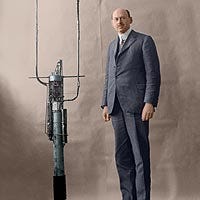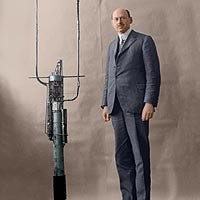Today in 1926, Robert Goddard launched the world’s first liquid-fueled rocket.
Goddard and his team launched 34 rockets between 1926 and 1941, achieving altitudes as high as 2.6 kilometers (1.6 miles) and speeds as high as 885 km/h (550 mph). Six years earlier, an editorial in The New York Times scoffed at Goddard’s assertion that i…
Keep reading with a 7-day free trial
Subscribe to This Month In the History of Information Technologies to keep reading this post and get 7 days of free access to the full post archives.




